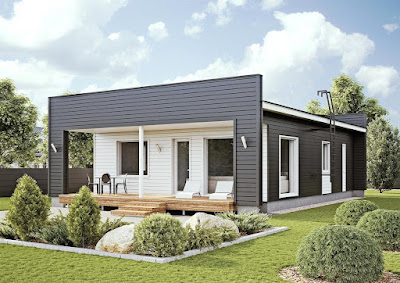How Transportable Homes Are Changing the Game
In recent years, the housing market has witnessed a significant shift towards innovative and sustainable solutions, with transportable homes emerging as a game-changer in the industry. Transportable homes, also known as modular or prefab homes, are structures that are built off-site and then transported to their final location for assembly. This modern approach to housing offers a wide range of benefits and has sparked a wave of interest and demand in the market.
The importance of transportable homes in today's housing market cannot be overstated. As the demand for affordable and sustainable housing options continues to rise, these homes have emerged as a viable solution to address the challenges of traditional construction methods. With their flexibility, cost-effectiveness, and environmental sustainability, Cambridge transportable homes are reshaping the way individuals and businesses approach homeownership and property development.
Advantages of Transportable Homes
One of the key advantages of transportable homes lies in their flexibility and customization options. These homes can be tailored to meet the specific needs and preferences of homeowners, offering a level of personalization that is often not achievable with traditional construction methods. Whether it's the layout, design, or interior finishes, individuals have the freedom to create a home that truly reflects their lifestyle and aesthetic preferences.
In addition to flexibility, transportable homes offer significant cost-effectiveness and time-saving benefits. The off-site construction process reduces labor costs and construction time, resulting in overall savings for homeowners and developers. Moreover, the controlled environment of the factory setting minimizes the impact of weather delays, ensuring a more efficient and streamlined construction process.
Furthermore, transportable homes are championing environmental sustainability and energy efficiency. The use of sustainable materials, waste reduction practices, and energy-efficient design features are intrinsic to the construction of these homes. As the world continues to prioritize eco-friendly practices, transportable homes are positioned as a sustainable housing option that aligns with global environmental goals.
Impact on Housing Industry
The increasing popularity and demand for transportable homes have had a profound impact on the housing industry. This innovative approach to housing construction has disrupted traditional home-building methods, challenging the status quo and paving the way for a new era of property development. With a growing number of individuals and businesses embracing the concept of transportable homes, the industry is experiencing a shift towards more efficient and sustainable practices.
Moreover, the rise of Cambridge transportable homes has created opportunities for innovation and creativity in design. Architects and builders are exploring new possibilities in modular construction, pushing the boundaries of traditional architecture and redefining the concept of modern living spaces. This wave of creativity has led to the development of cutting-edge designs and innovative solutions that cater to the evolving needs of homeowners and businesses.

Case Studies
Real-life examples of successful transportable home projects serve as compelling evidence of the impact and potential of this housing trend. From residential properties to commercial developments, there are numerous case studies that showcase the versatility and quality of transportable homes. Testimonials from homeowners and businesses who have embraced this trend further highlight the positive experiences and satisfaction associated with choosing a transportable home as their housing solution.
One such example is the Smith family, who opted for a transportable home for their growing family. With the flexibility to customize the layout and design, they were able to create a home that perfectly suited their needs, without the stress and uncertainties typically associated with traditional construction. Similarly, businesses have found success in utilizing transportable structures for office spaces, retail outlets, and hospitality venues, embracing the efficiency and versatility offered by these modern building solutions.
Considerations Before Choosing a Transportable Home
Before committing to a transportable home, there are several important considerations that individuals and businesses should keep in mind. Location and site requirements play a critical role in the feasibility of transportable homes, as access to the site and the terrain can impact the transportation and assembly process. Understanding the local regulations and building codes is essential to ensure compliance and seamless integration of the home into its surroundings.
Additionally, budgeting and financing options should be carefully evaluated to determine the financial feasibility of a transportable home. While these homes offer cost-saving benefits, it is important to assess the overall budget and explore financing options that align with the specific needs and constraints of the project. By addressing these considerations proactively, individuals and businesses can make informed decisions about the suitability of a transportable home for their housing or development needs.
Future Outlook
Looking ahead, the future of transportable homes appears promising, with continued growth and development expected in the industry. As advancements in technology and manufacturing processes continue to enhance the quality and efficiency of modular construction, the appeal of transportable homes is likely to expand further. The potential for further innovation in sustainable materials, energy-efficient systems, and smart home technologies presents exciting opportunities for the evolution of transportable homes.
Moreover, the predictions for the future of transportable homes point towards a broader acceptance and integration of these homes into mainstream housing options. With a focus on addressing housing shortages, promoting sustainable development, and meeting the diverse needs of communities, transportable homes are poised to play a significant role in shaping the future of the housing market. As awareness and understanding of the benefits of transportable homes continue to grow, more individuals and businesses are expected to explore this innovative housing option.
Conclusion
In conclusion, the evolution of Cambridge transportable homes represents a transformative shift in the housing market, offering a range of benefits that cater to the needs of modern homeowners and developers. From flexibility and cost-effectiveness to sustainability and innovation, transportable homes have redefined the possibilities of housing construction and design.
As the industry continues to thrive and evolve, it is essential for individuals and businesses to consider the potential of transportable homes as a viable and progressive housing solution.

Comments
Post a Comment